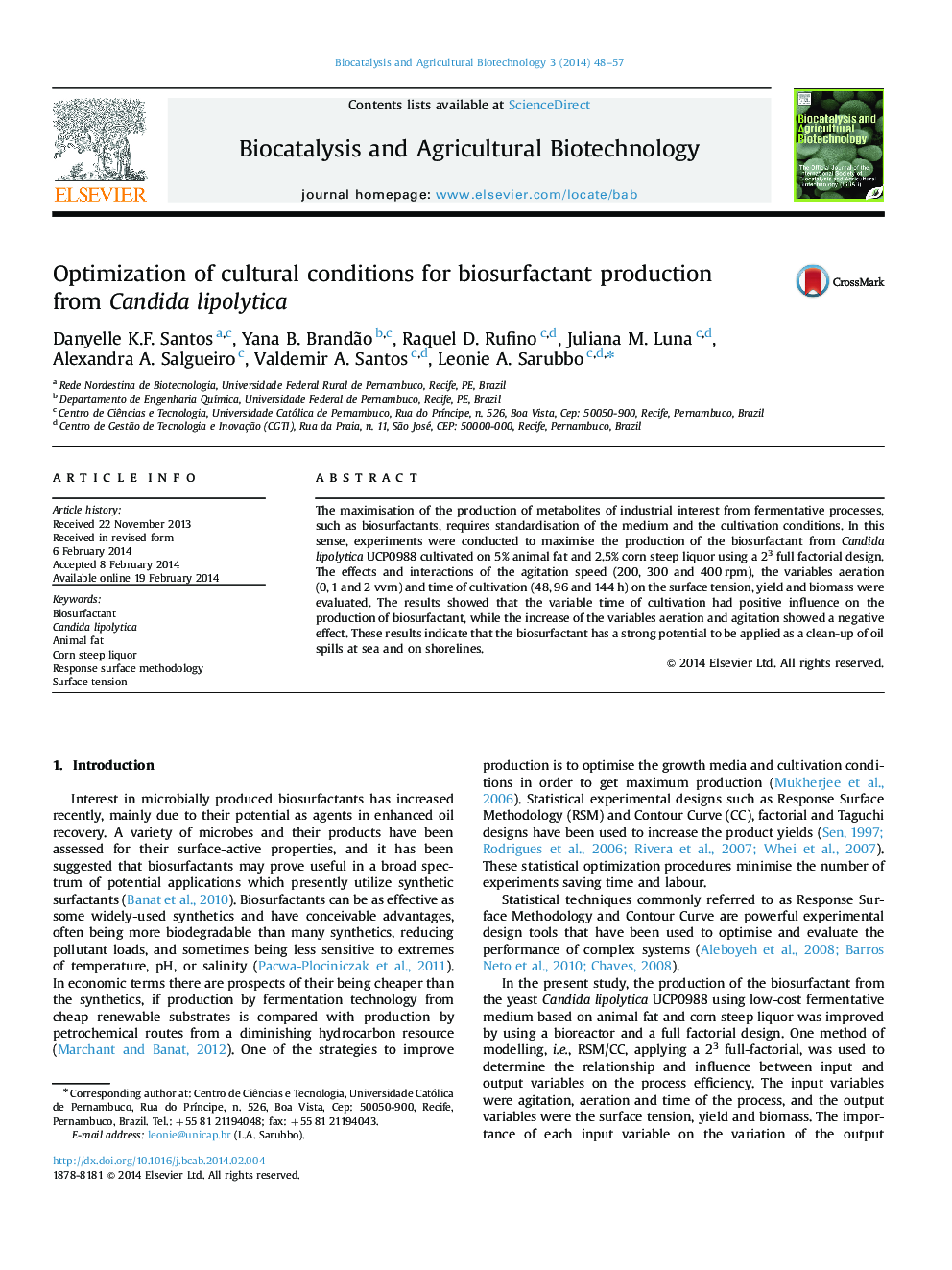| Article ID | Journal | Published Year | Pages | File Type |
|---|---|---|---|---|
| 2075419 | Biocatalysis and Agricultural Biotechnology | 2014 | 10 Pages |
•The production of a biosurfactant was optimised using a factorial design.•The effects of variables on surface tension, yield and biomass were evaluated.•The time of cultivation had positive influence on the production of biosurfactant.•The aeration and agitation showed negative effect on the production of biosurfactant.•The biosurfactant has a strong potential to be applied as a clean-up of oil spills.
The maximisation of the production of metabolites of industrial interest from fermentative processes, such as biosurfactants, requires standardisation of the medium and the cultivation conditions. In this sense, experiments were conducted to maximise the production of the biosurfactant from Candida lipolytica UCP0988 cultivated on 5% animal fat and 2.5% corn steep liquor using a 23 full factorial design. The effects and interactions of the agitation speed (200, 300 and 400 rpm), the variables aeration (0, 1 and 2 vvm) and time of cultivation (48, 96 and 144 h) on the surface tension, yield and biomass were evaluated. The results showed that the variable time of cultivation had positive influence on the production of biosurfactant, while the increase of the variables aeration and agitation showed a negative effect. These results indicate that the biosurfactant has a strong potential to be applied as a clean-up of oil spills at sea and on shorelines.
